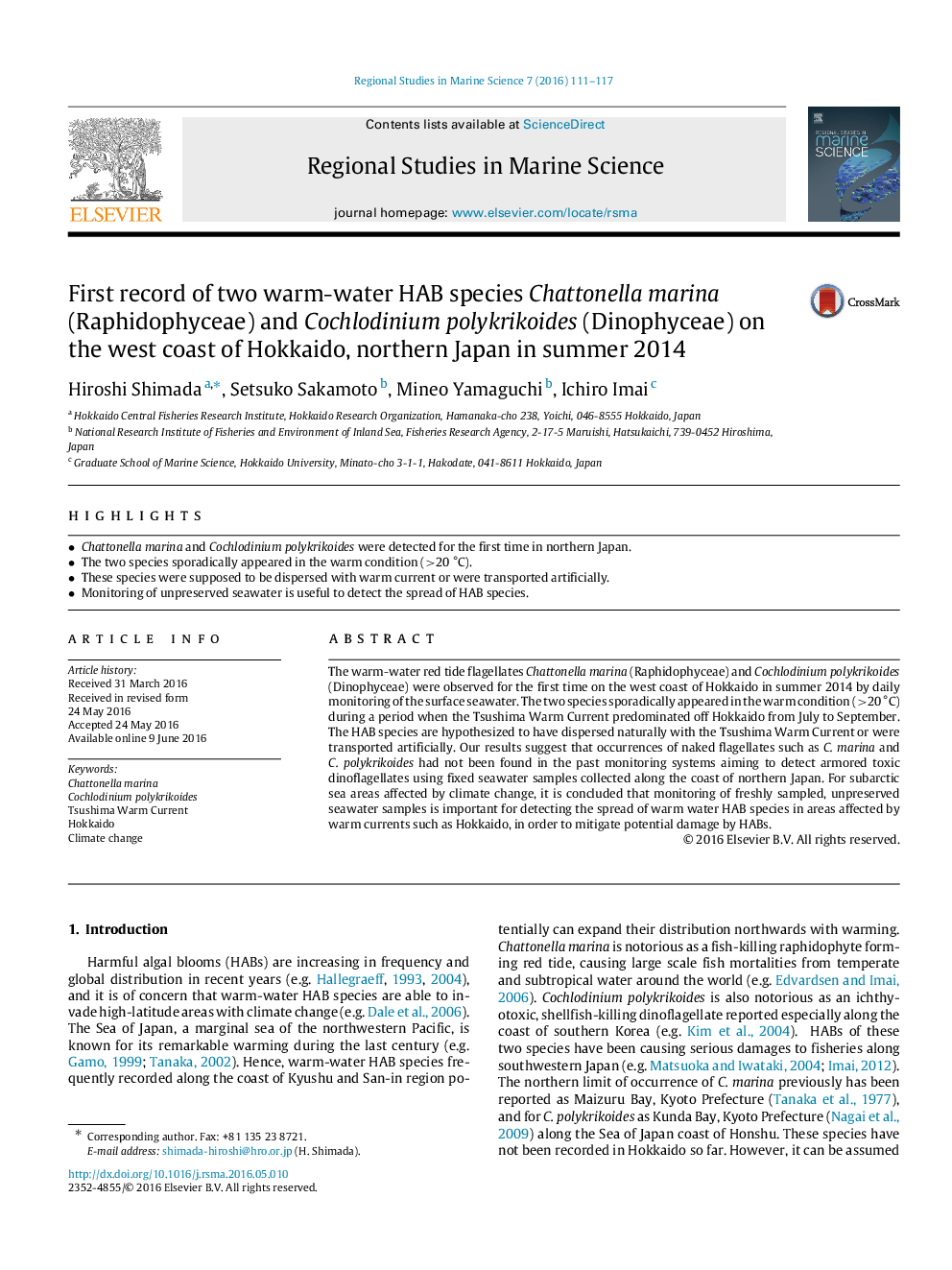| Article ID | Journal | Published Year | Pages | File Type |
|---|---|---|---|---|
| 6363237 | Regional Studies in Marine Science | 2016 | 7 Pages |
Abstract
The warm-water red tide flagellates Chattonella marina (Raphidophyceae) and Cochlodinium polykrikoides (Dinophyceae) were observed for the first time on the west coast of Hokkaido in summer 2014 by daily monitoring of the surface seawater. The two species sporadically appeared in the warm condition (>20 °C) during a period when the Tsushima Warm Current predominated off Hokkaido from July to September. The HAB species are hypothesized to have dispersed naturally with the Tsushima Warm Current or were transported artificially. Our results suggest that occurrences of naked flagellates such as C. marina and C. polykrikoides had not been found in the past monitoring systems aiming to detect armored toxic dinoflagellates using fixed seawater samples collected along the coast of northern Japan. For subarctic sea areas affected by climate change, it is concluded that monitoring of freshly sampled, unpreserved seawater samples is important for detecting the spread of warm water HAB species in areas affected by warm currents such as Hokkaido, in order to mitigate potential damage by HABs.
Related Topics
Physical Sciences and Engineering
Earth and Planetary Sciences
Oceanography
Authors
Hiroshi Shimada, Setsuko Sakamoto, Mineo Yamaguchi, Ichiro Imai,
